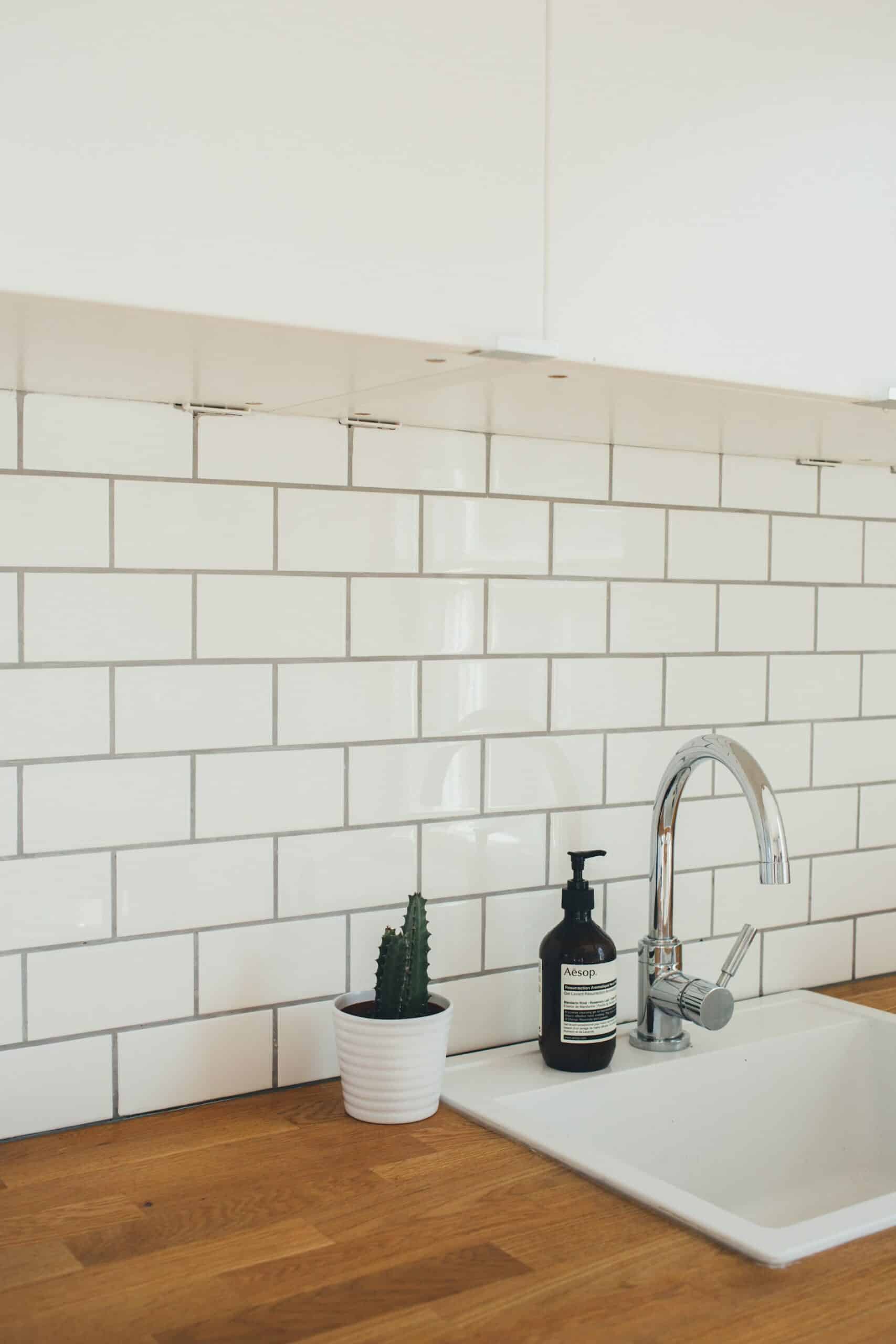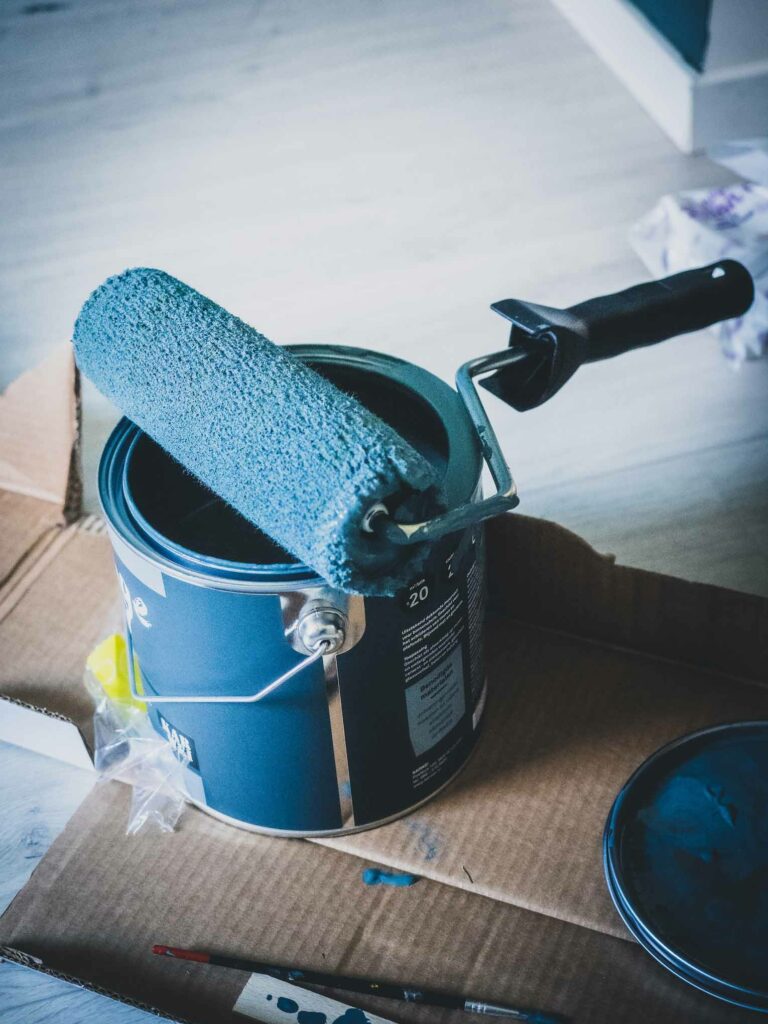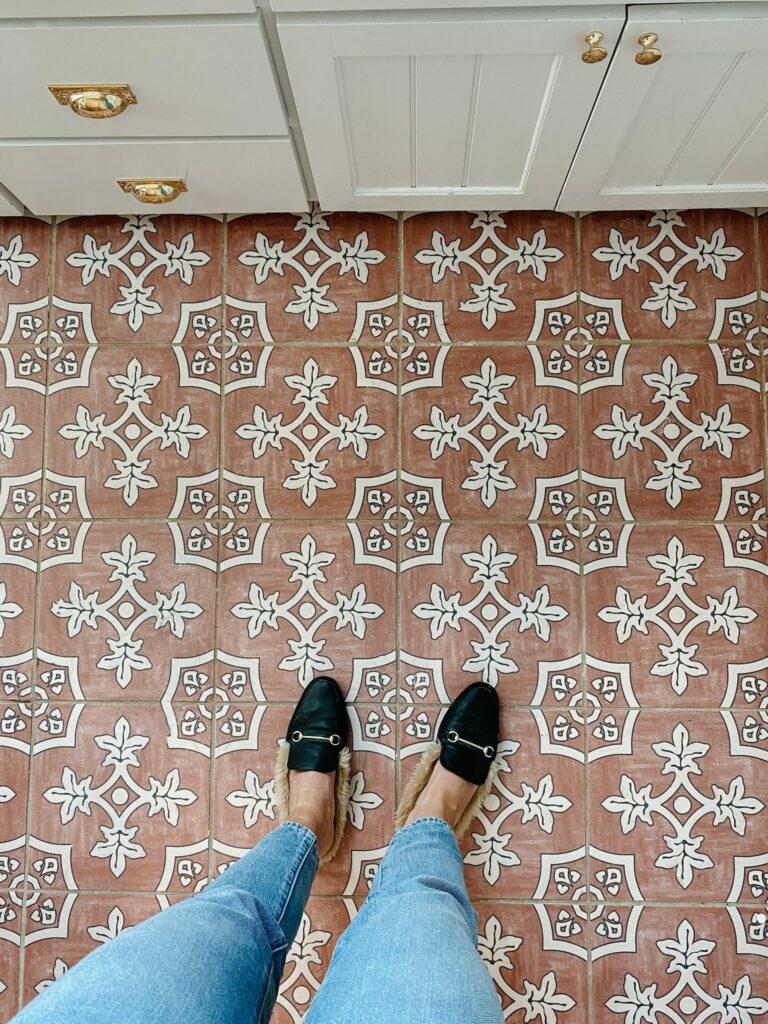How to Remove Paint from Tile? (3 Methods)

When giving your walls a fresh paint coat, it’s not uncommon for a little paint to splash and drip onto the floor or your backsplash. If this has happened to you, how can you remove paint from tile? Here are 3 fail-proof methods to solve this problem!
Firstly, you can remove paint from tile by wetting it and rubbing at it with a sponge. Gently scrape the residual paint off with a plastic scraper, and wipe the rest off with some rubbing alcohol. You can also use a heat application method. As a last resort, use turpentine.
This article will take you through the steps to follow for removing paint from tile. Let’s get started!
RELATED: How Long Does It Take To Paint a Room?
How To Remove Paint From Tile and Grout?
Removing paint from tile and grout involves using a wet sponge and wiping off the paint. After this, use a plastic scraper to remove the dried paint. If there is any paint left, remove it with some rubbing alcohol.
Finding even just a few specks of paint on your tiles can be disheartening, particularly if you’re renovating your home and you’ve spent a lot of time and money on expensive flooring.
Below is an in-depth explanation on the steps for how to remove paint from tile:
1. Use a Sponge and Warm Water
If you have accidentally spilled paint on your tiles, it’s best to act quickly because it’s easier to remove wet paint than when it has dried.
Grab the following items as soon as you can:
- A Clean sponge (avoid one that’s too abrasive as this can scratch the tile)
- A bowl of warm water
After gathering the sponge and water, follow these steps:
- Immerse the sponge in the water and give it a squeeze.
- If there is paint in the grout, focus on this area first because grout is porous, and will absorb the paint quickly.
- Wipe off the wet paint, being sure to rinse the sponge after every two to three wipes. This ensures that the paint you have wiped off doesn’t get smeared back onto the tiles.
If the paint spill is extensive or you want to remove as much as possible before scraping, apply some baking soda with a few drops of water to the stain. Use circular motions with your sponge, and repeat if necessary. Baking soda is gentle but also a little abrasive, and can help do a lot of the heavy lifting.
2. Scrape the Dry Paint off With a Plastic Scraper
Depending on how much paint you’ve spilled onto the tiles and how much it’s dried, there’s a chance that there will still be some paint remaining after the previous step. This is no reason to panic because you can easily remove it with a plastic paint scraper or a plastic blade.
Avoid using a metal one because this could scratch the tiles. If you don’t have a plastic scraper, a plastic putty knife will work. It’s better to wait until you get one than to risk using a more damaging tool.
These Plastic Blades from Amazon are perfect for removing paint from tiles. They come in a pack of four, and won’t scratch your tiles.
Once you have your plastic scraper or blade, gently scrape at the paint to remove it. When you have finished, use a damp cloth to remove the loose pieces of paint.

3. Remove Any Residual Paint With Rubbing Alcohol
Rubbing alcohol is reasonably cheap and widely available at most drugstores or online. If you don’t have any rubbing alcohol, you can use nail polish remover instead. Nail polish remover contains acetone, which can have a similar effect to rubbing alcohol.
Before using the rubbing alcohol or nail polish remover, consider using a face mask because the fumes are strong and can cause headaches, dizziness, and nausea. It may also irritate the skin, so it’s a good idea to wear gloves as well.
Here’s how to apply the rubbing alcohol or nail polish remover:
- Apply some rubbing alcohol or nail polish remover to a cotton wool ball or pad.
- Gently dab at the paint stains until they are saturated with the rubbing alcohol or nail polish remover.
- Allow it to sit for around twenty minutes to soften the paint.
- Wipe any residual rubbing alcohol or nail polish remover off with a damp cloth, and use your plastic scraper to remove stubborn paint.
4. Use a Heat Application Method
If you don’t like the idea of using rubbing alcohol or nail polish remover, consider using a heat application method instead. This involves using a hairdryer or heat gun.
After trying to remove the paint with a wet sponge and plastic scraper, switch on your hairdryer or heat gun and apply constant heat to the paint for five minutes. This will soften it, making it easier for you to have another go at it with the scraper.
5. Use Turpentine as a Last Resort
In the unlikely event that you have tried all of the above methods, and nothing has worked, try using a small amount of turpentine. Turpentine is a paint solvent, and will quickly dissolve the remaining paint. It has a very powerful smell, so be sure to wear a mask and ventilate the room when using it.
Alternatively, use a paint thinner or paint removal product. They work in the same way as turpentine, and a little goes a long way.
Smart ‘n Easy Paint Remover Gel from Amazon will effectively and safely remove paint from your tiles, and you can use it for any future accidental paint spills.
After applying the turpentine or paint remover, rinse the tiles with water as it is highly toxic.

Final Remarks
Removing paint from tile and grout may seem difficult, but it can be done. Wet paint is the easiest to remove because you can simply wipe it off with water.
If the paint has dried, scrape it off or clean it using rubbing alcohol. Never scrape or rub too hard, as this can damage the floor, and if you’re using rubbing alcohol, you must apply it onto the surface with a cottonwool ball or pad.





